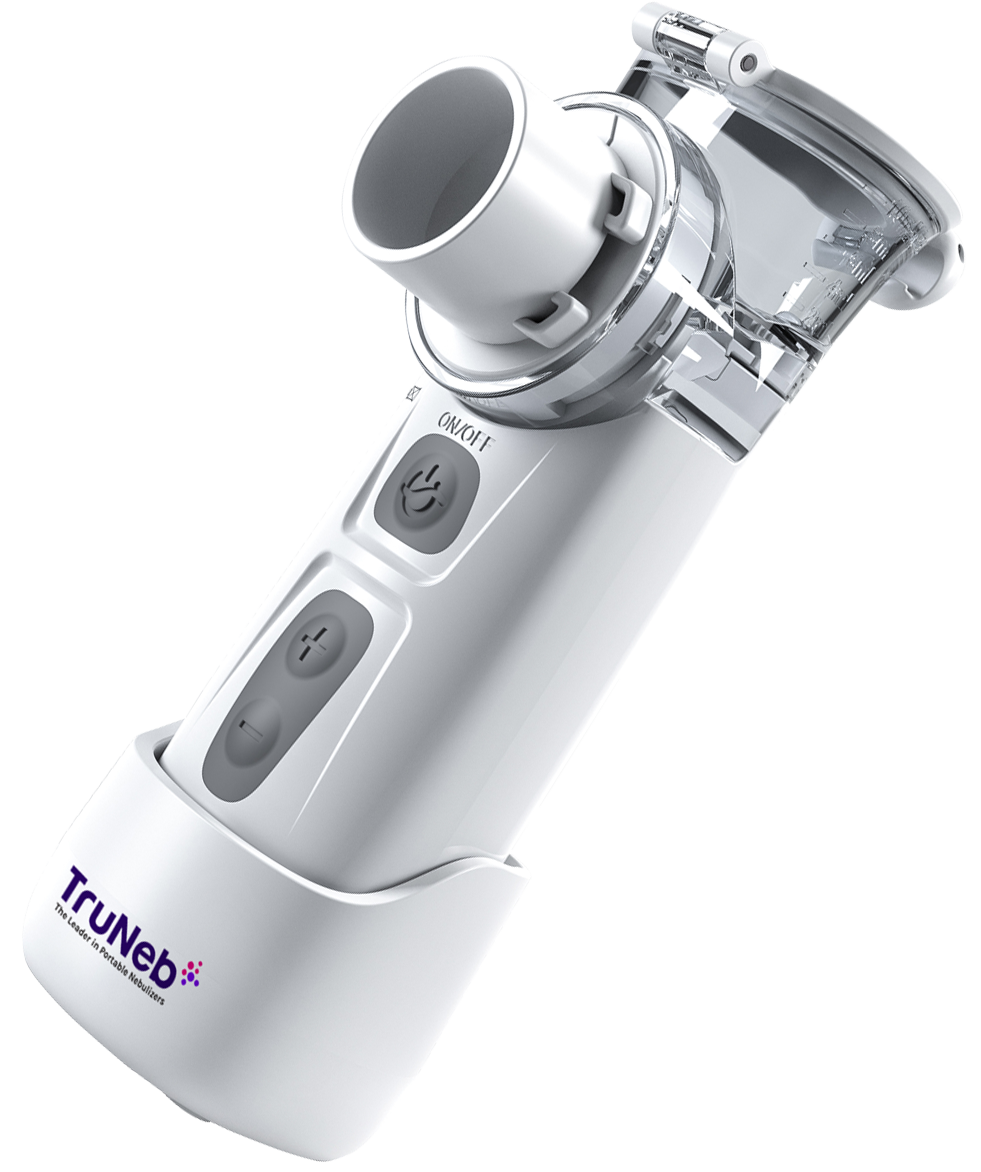On this page
RSV and pneumonia are both respiratory illnesses that can make anyone very ill. Even though they both have some similarities, there are distinct differences in terms of causes, symptoms, and who is at risk most.
Understanding the difference between RSV and pneumonia can help you recognize when you might have one over the other – and when to seek a diagnosis and & get treatment. We’ll also talk about strategies to prevent getting sick with these illnesses.
Difference Between RSV and Pneumonia
RSV
Respiratory Syncytial Virus (RSV) is a common respiratory virus that infects the lungs and breathing passages. It's highly contagious and can affect people of all ages, but it's especially concerning for infants, young children, and older adults with weakened immune systems.
Symptoms of RSV
Symptoms usually appear within 4 to 6 days after exposure and can include:
- Runny nose
- Decreased appetite
- Coughing
- Sneezing
- Fever
- Wheezing
In severe cases, RSV can lead to more serious complications like bronchiolitis (inflammation of the small airways in the lungs) or even pneumonia (yes, RSV can cause a secondary pneumonia infection!).
Risk factors for severe RSV
- Premature infants
- Children younger than 2 with chronic lung disease or congenital heart disease
- Older adults, especially those 65+
- Adults with weakened immune systems or chronic heart/lung disease
Infants and young children (especially infants under 3 months) are still at a higher risk of complications from RSV compared to the rest of the population.
By the numbers
According to the CDC, 58,000-80,000 children under age 5 are hospitalized from RSV infections every year. Almost every child will have had RSV by the time they are 2 years old. Fortunately, most of the time the virus only causes a cold-like illness.
Spread of disease
RSV spreads through close contact with an infected person, contaminated surfaces, or respiratory droplets in the air from a cough/sneeze. To help prevent the spread of RSV, practice good hygiene habits like washing hands frequently, avoiding close contact with sick people, covering coughs/sneezes, and cleaning contaminated surfaces.
Pneumonia
Pneumonia is an infection that inflames the air sacs in one or both lungs, causing cough with phlegm, fever, chills, and difficulty breathing. The air sacs may fill with fluid or pus, causing more severe symptoms.
Types of pneumonia
- Viral pneumonia – caused by viruses like influenza, RSV, or SARS-CoV-2 (the virus that leads to COVID-19)
- Bacterial pneumonia – caused by bacteria like Streptococcus pneumoniae
- Fungal pneumonia – caused by fungi found in soil or bird droppings, more common in people with chronic health problems or weakened immune systems
Symptoms of pneumonia
Symptoms can range from mild to severe and may include:
- Chest pain when breathing or coughing
- Confusion or changes in mental awareness (in adults 65+)
- Cough, which may produce phlegm
- Fatigue
- Fever, sweating, and chills
- Lower than normal body temperature (in adults 65+ or with weak immune systems)
- Nausea, vomiting, or diarrhea
- Shortness of breath
- Low oxygen levels
Risk factors for pneumonia
- Adults 65+
- Children under 2
- Chronic disease like asthma, heart disease, or diabetes
- Weakened or suppressed immune system
- Smoking
- Occupational exposure to air contaminants
By the numbers
Per the CDC, there are 1.4 million emergency department visits due to pneumonia from infectious organisms every year. Pneumonia caused over 41,000 deaths in the U.S. in 2022.
Spread of disease
Pneumonia can be spread by respiratory droplets from coughing/sneezing, touching surfaces contaminated with pneumonia-causing agents and then touching your mouth/nose, or even by breathing fungal spores from contaminated soil/droppings.
Prevention tactics are similar to RSV – frequent hand hygiene, avoiding sick contacts, getting vaccinated, quitting smoking – but may also include wearing a mask around dust/soil for those with chronic illnesses.
Similarities and Differences: RSV vs. Pneumonia
Though RSV and pneumonia share some similarities, there are key differences between the two conditions.
Causes
RSV is caused by a specific virus, the respiratory syncytial virus. It's the most common cause of bronchiolitis and pneumonia in children under age 1. In contrast, pneumonia can be caused by a variety of factors, including viruses (like RSV), bacteria, and fungi.
Symptoms
Symptoms of RSV and pneumonia can be similar, including cough, fever, and difficulty breathing. However, RSV typically starts with mild, cold-like symptoms that can progress to more severe respiratory issues. Pneumonia often comes with additional symptoms like chest pain, chills, and confusion (especially in older adults).
Complications
Both RSV and pneumonia can lead to severe complications, but pneumonia is generally considered more serious. RSV can lead to bronchiolitis and pneumonia, especially in high-risk groups. Pneumonia can cause lung abscesses, fluid accumulation around the lungs, and even sepsis if left untreated.
Diagnosing RSV and Pneumonia
Diagnosing RSV and pneumonia starts with a physical examination by a licensed doctor. Healthcare providers will look for characteristic signs and symptoms of each condition.
For RSV, laboratory tests like a rapid antigen test or a molecular polymerase chain reaction (PCR) test can detect the virus in nasal secretions. These tests are especially useful for confirming RSV in young children.
Diagnosing pneumonia may involve several tests:
- Blood tests to check for infection and oxygen levels
- Sputum culture to identify the specific cause (bacteria or fungus)
- Pulse oximetry to measure oxygen saturation in the blood
- Chest X-ray to look for inflammation and fluid in the lungs
- Computed tomography (CT) scan for a more detailed look at the lungs
The diagnostic approach can differ based on the severity of symptoms, someone’s age, and their overall health. For example, a chest X-ray might be recommended for an older adult with a persistent cough and fever, while a young, otherwise healthy adult might be diagnosed based on symptoms alone.
In some cases, additional tests like a bronchoscopy (inserting a camera into the lungs) or pleural fluid culture (testing fluid collected from around the lungs) may be necessary if the patient doesn't respond to initial treatment or if there are concerns about complications.
Treatment Options for RSV and Pneumonia
Treatment for RSV and pneumonia depends on how severe the illness is. In many cases, supportive care (managing symptoms) is the first line of treatment.
For mild cases of RSV, supportive care includes:
- Rest
- Plenty of fluids to prevent dehydration
- Over-the-counter fever reducers and pain relievers (consult a pediatrician before giving any medications to children)
- Saline nasal drops and suctioning to clear nasal passages in infants
- Humidified air to help with breathing
In severe cases of RSV, especially in high-risk individuals, antiviral medications like Ribavirin can be used. These medications can help reduce the severity and duration of the illness.
For viral pneumonia, treatment mainly involves supportive care similar to RSV. Antibiotics are not effective against viruses, but might be used if a secondary bacterial infection develops.
In bacterial pneumonia, antibiotics are the primary treatment. The specific antibiotic prescribed depends on the type of bacteria causing the infection and the patient's age and health status. It's crucial to finish the entire course of antibiotics, even if symptoms improve, to prevent the infection from coming back.
In severe cases of either RSV or pneumonia, hospitalization may be necessary. In the hospital, kids and adults can receive:
- Oxygen therapy to help with breathing
- Intravenous (IV) fluids to prevent dehydration
- Breathing treatments (nebulizers or inhalers) to open airways
- Close monitoring of vital signs and oxygenation
The main difference in treatment between RSV and pneumonia is the use of antibiotics. Antibiotics are not effective against RSV because it's a viral infection. However, since bacterial pneumonia is treated with antibiotics, getting an accurate diagnosis is important to make sure the appropriate treatment is prescribed.
Vaccination
Several vaccines and antibody treatments are available that can help prevent severe illness in at-risk groups of people including:
RSV
Antibodies
2023 was the first year a specific antibody treatment became available for infants on a widespread level. The antibodies are given like a vaccine and provide an extra layer of defense to help prevent babies from getting severe illness.
Vaccines
There is now an RSV vaccine available for pregnant women between 32-36 weeks gestation. This vaccine provides protection against severe RSV in the baby for up to 6 months after birth.
For adults 60 and older, an RSV vaccine is also available to prevent serious illness. Seniors are at a higher risk of developing complications from respiratory viruses.
Pneumonia
Current pneumonia vaccines help prevent pneumococcal disease, which is any illness caused by the bacteria Streptococcus pneumoniae. In the United States, the two recommended pneumococcal vaccines are:
- Pneumococcal conjugate vaccines (PCVs, specifically PCV15 and PCV20)
- Pneumococcal polysaccharide vaccine (PPSV23)
PCV15 or PCV20 is recommended for children younger than 5 years old and for higher risk children older than 5.
PCV15 or PCV20 is recommended for adults who never received another PCV vaccine and are either high risk or over the age of 65.
Speak to your doctor for questions about getting vaccinated against RSV or pneumonia.
When to Seek Medical Attention
Getting medical attention at the right time is crucial for both RSV and pneumonia. It's essential to be aware of the signs and symptoms that indicate a more severe illness and require prompt medical care.
Seek medical attention if you or your child experience:
- Difficulty breathing or rapid breathing
- High fever (above 101°F for adults or 100.4°F for children)
- Persistent cough, especially with colored mucus
- Chest pain or tightness
- Bluish discoloration of the lips or fingernails (a sign of low oxygen levels)
- Severe fatigue or lethargy
- Dehydration (decreased urine output, dry mouth, or sunken eyes)
For high-risk individuals, such as infants, older adults, and people with weakened immune systems or chronic health conditions, it's essential to be extra vigilant. These groups are more likely to develop severe complications from RSV or pneumonia, so it's better to err on the side of caution and seek medical advice early.
Early diagnosis and treatment are key to preventing complications and a faster recovery. If RSV or pneumonia is suspected, a healthcare provider can perform the necessary tests and start the appropriate treatment plan. Delaying medical care can lead to more severe illness, longer recovery times, and even hospitalization.
Remember, if you're ever unsure whether your symptoms warrant medical attention, it's always best to contact your healthcare provider anyway. They can assess your specific situation and provide personalized advice on when to come in for an evaluation.
TruNeb™ Portable Nebulizer: Making Breathing Treatments Easier
For those managing respiratory conditions like RSV or pneumonia, nebulizer treatments can be an important part of the recovery process. Traditional nebulizers with bulky compressors and tangled tubing can be inconvenient and frustrating to use. The TruNeb™ Portable Nebulizer is hassle free.
Our neb is perfect for people that want to take their treatments on the go, or simply want a quiet convenient way to take their breathing medications at home.

